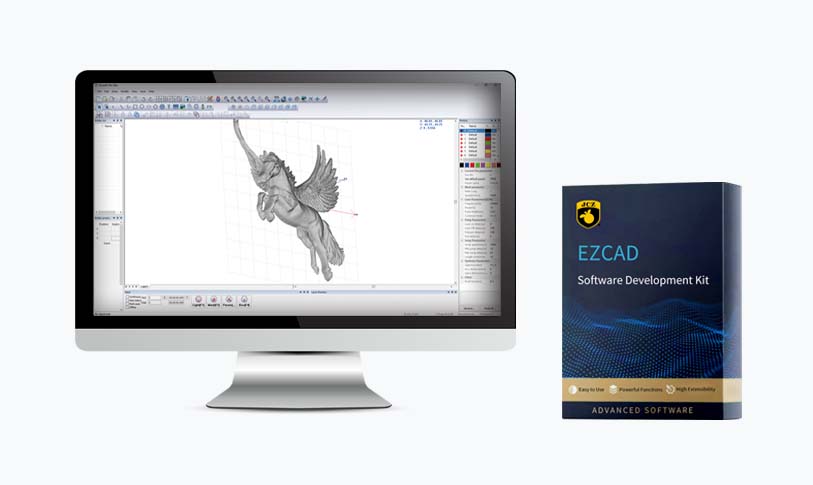****
In today’s rapidly evolving manufacturing landscape, the demand for precision and efficiency has never been higher. The advent of SLA (Stereolithography) 3D software has revolutionized additive manufacturing, providing engineers, designers, and hobbyists with tools to create intricate models that were once deemed impossible to produce. This article delves into the significance of SLA 3D software, its functionalities, benefits, and its impact on various industries.
Understanding SLA 3D Printing
SLA 3D printing is a type of additive manufacturing that uses a laser to cure liquid resin into solid structures. Unlike traditional subtractive manufacturing processes, which cut away material, SLA builds objects layer by layer, allowing for greater design freedom and complexity. The SLA 3D software plays a pivotal role in this process by translating a 3D model into instructions that the printer can follow to create the object with stunning accuracy.

A Comprehensive Guide to SLA 3D Software: Revolutionizing the Future of Additive Manufacturing and Prototyping
Key Features of SLA 3D Software
1. **Model Preparation**: SLA 3D software allows users to import 3D models from various CAD software. Once imported, the software can orient the model for optimal printing conditions, ensuring the highest quality is achieved.
2. **Support Generation**: One of the standout features of SLA 3D software is its ability to generate supports for models. Due to the nature of resin printing, certain overhangs and intricate details may require additional support structures. The software automates this process, ensuring that supports don’t interfere with the aesthetic qualities of the final product.
3. **Layer Settings**: Users can adjust layer thickness and other parameters like exposure time and printing speed. Fine-tuning these settings can yield significant differences in the final print quality, enabling customization based on the specific requirements of a project.

A Comprehensive Guide to SLA 3D Software: Revolutionizing the Future of Additive Manufacturing and Prototyping
4. **Slicing**: The software takes a 3D model and slices it into thin horizontal layers that the printer will build one at a time. This slicing function is critical, as it determines how well the printer replicates the intricate details of the model.
5. **Previews and Simulations**: Many modern SLA 3D software solutions offer a preview feature, enabling users to visualize the printing process and catch potential issues before proceeding. This functionality can save users time and resources by minimizing errors.
Advantages of Using SLA 3D Software
The integration of SLA 3D software into the design and manufacturing process offers numerous advantages:
– **High Precision and Detail**: SLA printers can create highly detailed models with smooth surface finishes. This level of accuracy is particularly beneficial for industries such as jewelry design, dental applications, and any field requiring high-resolution prototypes.
– **Versatility**: SLA 3D software often supports a variety of materials, offering flexibility for different applications. From rigid plastics to flexible resins, the range of materials expands the creative possibilities for designers.
– **Rapid Prototyping**: The speed of SLA printing allows for rapid prototyping, enabling designers to iterate quickly based on feedback. This agility can significantly shorten the product development cycle, allowing companies to bring their products to market faster.
– **Cost-Effectiveness**: While the initial investment in SLA technology may be substantial, the long-term savings from lowered material waste and less required time for post-processing can outweigh initial costs. The efficiency gained through SLA 3D software ultimately enhances productivity.
Applications Across Industries
The implications of SLA 3D software span multiple sectors, including:
– **Manufacturing**: Companies leverage SLA for rapid prototyping of functional parts, allowing them to test designs and make improvements quickly.
– **Healthcare**: The medical field utilizes SLA 3D printing for custom prosthetics, dental models, and even bioprinting tissues for research and prototype testing.
– **Aerospace and Automotive**: These industries use SLA printing for producing complex components and lightweight parts, which is crucial for improving fuel efficiency and performance.
– **Consumer Products**: Entrepreneurs and designers rely on SLA technology to create compelling prototypes that attract investors or refine products before mass production.
Conclusion

A Comprehensive Guide to SLA 3D Software: Revolutionizing the Future of Additive Manufacturing and Prototyping
SLA 3D software is transforming the additive manufacturing landscape, providing users with powerful tools to create intricate, high-precision models across various industries. As technology continues to advance, the capabilities and features of SLA software will evolve, further enhancing its prominence in the world of 3D printing. Whether you’re a professional engineer or a hobbyist, understanding and utilizing SLA 3D software can unlock endless possibilities in design and manufacturing.mopa laser marking machine

